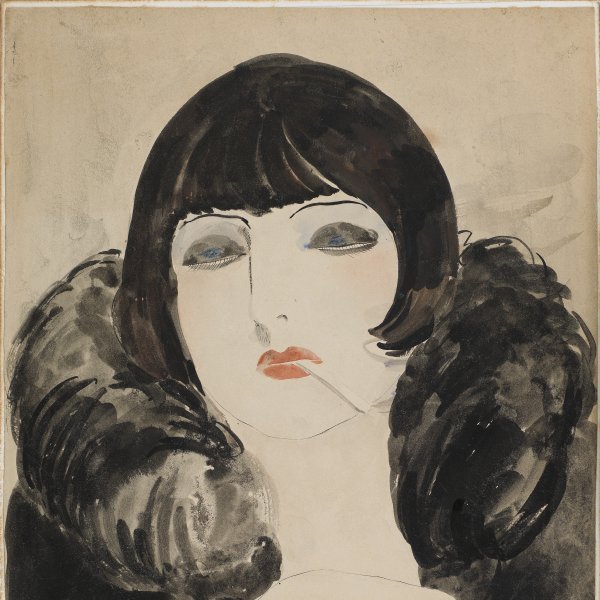Kees van Dongen
Delfshaven, 1877-Montecarlo, 1968
The Dutch painter Cornelis Theodorus Maria van Dongen, known as Kees van Dongen, attended drawing classes at the Akademie voor Beeldende Kunsten in Rotterdam and worked at the Rotterdamsche Nieuwsblad before emigrating to Paris in 1897. On arriving in the French capital, Van Dongen met the critic Félix Fénéon and the group of artists associated with La Revue Blanche, which Fénéon directed. He produced politically and socially committed illustrations for magazines such as L’Assiette au beurre in 1901, many of them on the theme of prostitution.
Although dark tones were initially predominant in his work owing to the influence of his Dutch background and his admiration for Rembrandt, his connection with Fauvism soon led him to broaden his palette. Indeed, his contacts with the members of this movement became effective in 1906, and he exhibited with them until 1912. During this time he was also in contact with the German Expressionists, with whom he showed his work in 1908, after receiving an invitation from the Die Brücke group through Max Pechstein.
Between 1910 and 1913 Van Dongen made several trips to Spain, Morocco and Egypt, during which he concentrated on executing a series of landscapes. His attraction for the exoticism of these places was also reflected in his illustrations for Dr Mardrus’s edition of the Arabian Nights, published in Paris in 1918. He later returned to his favourite subject matter, the human figure, and focused on sensuous depictions of women. The Marquise Casati and her friend Jasmy Jacob introduced him to the so-called beau monde of Paris. His commissions multiplied and he became the portraitist of famous people, for whom he also organised sumptuous parties and receptions on many occasions.
Although dark tones were initially predominant in his work owing to the influence of his Dutch background and his admiration for Rembrandt, his connection with Fauvism soon led him to broaden his palette. Indeed, his contacts with the members of this movement became effective in 1906, and he exhibited with them until 1912. During this time he was also in contact with the German Expressionists, with whom he showed his work in 1908, after receiving an invitation from the Die Brücke group through Max Pechstein.
Between 1910 and 1913 Van Dongen made several trips to Spain, Morocco and Egypt, during which he concentrated on executing a series of landscapes. His attraction for the exoticism of these places was also reflected in his illustrations for Dr Mardrus’s edition of the Arabian Nights, published in Paris in 1918. He later returned to his favourite subject matter, the human figure, and focused on sensuous depictions of women. The Marquise Casati and her friend Jasmy Jacob introduced him to the so-called beau monde of Paris. His commissions multiplied and he became the portraitist of famous people, for whom he also organised sumptuous parties and receptions on many occasions.





